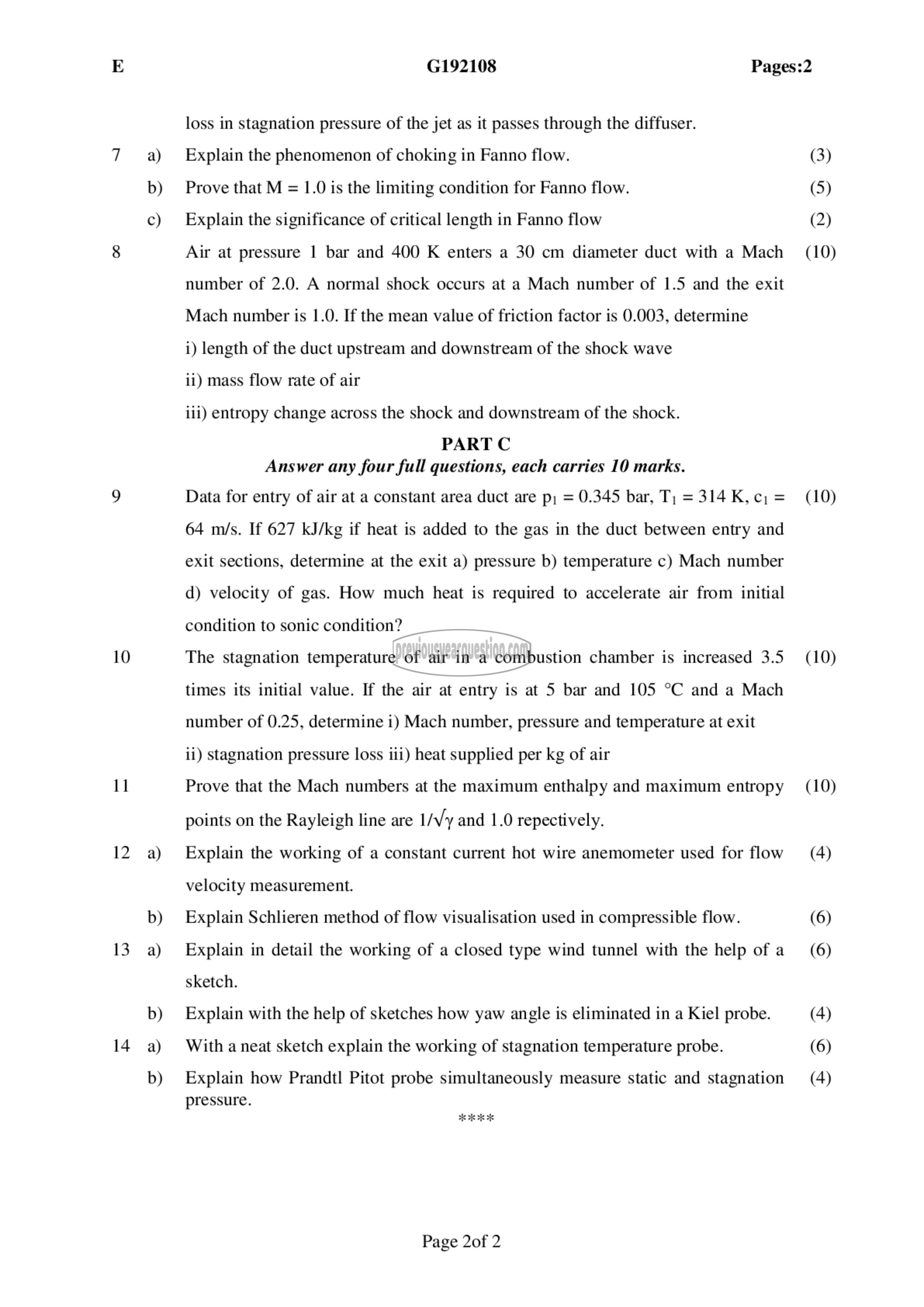APJ ABDUL KALAM TECHNOLOGICAL UNIVERSITY Previous Years Question Paper & Answer
Semester : SEMESTER 7
Subject : Compressible Fluid Flow
Year : 2019
Term : December
Branch : MECHANICAL ENGINEERING
Scheme : 2015 Full Time
Course Code : ME 409
Page:2
10
11
12
13
14
0)
௦)
a)
b)
a)
b)
a)
b)
G192108 Pages:2
loss in stagnation pressure of the jet as it passes through the diffuser.
Explain the phenomenon of choking in Fanno flow. (3)
Prove that M = 1.0 is the limiting condition for Fanno flow. (5)
Explain the significance of critical length in Fanno flow (2)
Air at pressure 1 bar and 400 K enters 8 30 cm diameter duct with ೩ Mach (10)
number of 2.0. A normal shock occurs at a Mach number of 1.5 and the exit
Mach number is 1.0. If the mean value of friction factor is 0.003, determine
i) length of the duct upstream and downstream of the shock wave
ii) mass flow rate of air
111) entropy change across the shock and downstream of the shock.
PART C
Answer any four full questions, each carries 10 marks.
Data for entry of air ೩! a constant area duct are رم = 0.345 bar, 11 ಎ 314 K,c; (10)
64 m/s. If 627 kJ/kg if heat is added to the gas in the duct between entry and
exit sections, determine at the exit a) pressure b) temperature c) Mach number
d) velocity of gas. How much heat is required to accelerate air from initial
condition to sonic condition?
The stagnation temperature of air in a combustion chamber is increased 3.5 (10)
times its initial value. If the air at entry is at 5 bar and 105 °C and a Mach
number of 0.25, determine i) Mach number, pressure and temperature at exit
ii) stagnation pressure loss iii) heat supplied per kg of air
Prove that the Mach numbers at the maximum enthalpy and maximum entropy (10)
points on the Rayleigh line are 1/Vy and 1.0 repectively.
Explain the working of a constant current hot wire anemometer used for flow (4)
velocity measurement.
Explain Schlieren method of flow visualisation used in compressible flow. (6)
Explain in detail the working of a closed type wind tunnel with the help of a (6)
sketch.
Explain with the help of sketches how yaw angle is eliminated in a Kiel probe. (4)
With a neat sketch explain the working of stagnation temperature probe. (6)
Explain how Prandtl Pitot probe simultaneously measure static and stagnation (4)
pressure.
Page 2of 2
